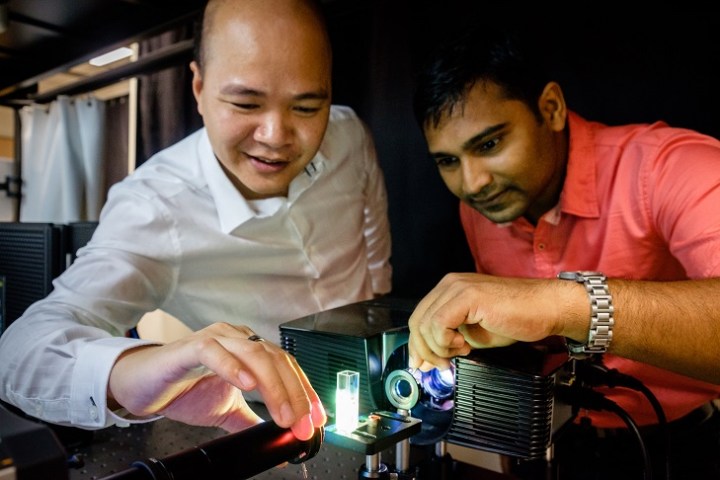The camera inside your smartphone uses a lens and a red-green-blue filter to capture color images, but researchers have just developed a tiny camera that doesn’t have a lens or a colored filter, yet can take not only colored images, but infrared and ultraviolet images too. A group from Singapore’s Nanyang Technological University recently announced the development of a lensless camera capable of recording visible, infrared and ultraviolet light all inside one camera.
The typical camera uses a colored filter and a lens — and switching over to another wavelength requires an entirely different camera (or an infrared filter that requires extreme long exposures). That’s not the case with NTU’s new development. The camera’s trifecta of unique capabilities comes from a design that replaces a lens with ground glass.
The crushed glass inside the mini-camera will scatter each wavelength of light differently. Using algorithms programmed for each type of light, the researchers were then able to reconstruct the image. Because the different wavelengths each have its own unique scatter pattern, the researchers were able to apply one algorithm to get the traditional visible light image, but another to get an infrared image and still more to capture ultraviolet.
The design also allows the camera to use a monochrome sensor and still take colored images. A traditional camera sensor uses a random pattern of red, green, and blue filters in order to capture color, called a Bayer array. The ground glass essentially serves the same purpose as the colored filter, only requires the library of data on how each wavelength is scattered to reassemble the image.
Along with essentially creating a visible, infrared and ultraviolet camera in one, the camera is also compact. The lens-free design means eliminating the bulkiest part of the camera. The research isn’t the first lensless camera — including research from MIT and Caltech — but the NTU camera offers the unique ability to capture any wavelength.
Lensless cameras like the one developed by NTU could help create smaller cameras, such as making slimmer smartphones, for example. Steve Cuong Dang, the assistant professor leading the research group, says the camera’s design could also be used in medical and scientific applications, among others. Infrared and ultraviolet photography is used for medicine, surveillance and astrophysics, he said. The different wavelengths could potentially also be used to detect bacteria on food or even in criminal forensics.
Lensless camera research has been ongoing for years without yet seeing a consumer product, but the ground-glass design adds another layer in the ongoing research to create smaller cameras by ditching the traditional lens.





